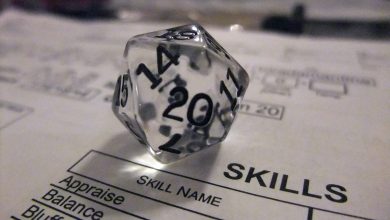America’s Best Idea – for Kids

One of the United States’ great legacies for the world is our National Parks. Starting with the founding of Yellowstone National Park, in 1872, National Parks have become one of the most important ways that natural treasures and important cultural sites have been protected and preserved for us and the generations to follow us.
Our family has really enjoyed using the sites protected by the National Park Service, both on trips and locally in St. Louis. Some of these sites are very accessible to children and really tap into their senses of awe and wonder about the world. But other sites, like National Battlefields and historical sites like Presidential homes, are not so relatable for children.
Fortunately, there is a great program for children at many of these parks: the Junior Ranger program. About half of the 401 areas owned or administered by the National Park Service provide these gateways for children to interact with and understand the National Parks and the legacies they protect.
Unfortunately, this program isn’t as well known as it should be. We had visited several of America’s National Parks before discovering the Junior Ranger program last summer on a trip to Washington, DC. While preparing for a visit to the National Mall, we read in Lonely Planet that the Mall had a Junior Ranger program. At the MLK Memorial, we found a ranger and asked her about the program, and she returned with an activity book for our kids to work on.
D and M, who were 6 and 4 years old at the time, loved the books. We went from Presidential monuments to war memorials across the western end of the Mall finding details we would have otherwise overlooked and asking questions of Rangers. When our survey of the sites was complete, we went to the Ranger Station. The Ranger on duty looked over the boys’ answers in the books, asked some questions to make sure they understood what they had learned, and then administered the oath:
As a National Park Ranger, I pledge to do my best to protect and preserve our National Parks and the lands in my community.

From the moment that the Ranger pinned the Junior Ranger badges on the boys, we were all hooked. Not only did the boys learn a lot more than they would have without the booklet, but also so did we. For example, both J and I had been to the Lincoln Memorial a couple times previously, but we had never known about Marian Anderson’s ground-breaking concert on the Memorial’s steps in 1939, a shockingly public and prominent event for an African-American woman at the time. We all learned more about the National Mall thanks to the Junior Ranger program.
During the rest of that trip, we sought out Rangers at the White House, Ft. McHenry, and Independence National Historical Park in Philadelphia. All these National Parks had programs that varied in depth and detail depending on the age of our children, so that the younger one was not lost, and the older one was not bored.
On our big trip this summer to Alaska, the boys also became Junior Rangers at the Denali National Park Ranger Station in Talkeetna (learning about climbing mountains, the history of the park, and the animals of the park), Kenai Fjords National Park (learning about the glaciers and wildlife of the park) and the Klondike Gold Rush Historical National Park in Skagway.

The Klondike Gold Rush program was particularly impressive, because not only did they provide a full adventure pack with Gold Rush-era games to play and laminated sheets with in-depth kid-appropriate information about buildings throughout the town, but also they had an entire building devoted to the Junior Ranger program, with two Rangers on duty to make sure that kids understood what the Gold Rush meant, why people went on the Gold Rush, and how it affected them and the land around them.
If not for the Junior Ranger program, our visit to Skagway would have had much less depth. We would have visited fewer buildings, we wouldn’t have had nearly the context of why the site was important for our nation’s history, and we wouldn’t have explored as much of the town. What might have been just another town on a blur of towns on the vacation instead became a place that will stick out in the boys’ memories as the place where they played with a Jacob’s Ladder and pretended to be on the Gold Rush (and not just for the boys; for us, too).
We also saw that the good idea was spreading. In addition to the Junior Ranger program at National Park Service-related sites, the Alaska Adventure Ranger program includes museums, parks, and other sites that were inspired by the Junior Rangers to provide similar interactions. The boys became Junior Biologists at the Alaska Islands & Ocean Visitor Center, learning about the Alaska Maritime National Wildlife Refuge, willingly and excitedly spending an hour looking at the exhibits about sea birds and the Japanese invasion of some Aleutian Islands during World War II. Because the boys did at least three sites in the Alaska program, they became Alaska Adventure Rangers and received a special badge.
Of course, not everyone can visit the more remote parks like those in Alaska, but we’ve also seen our understanding of our home area improved by the Junior Ranger program. When we returned to St. Louis last summer, we found out that some of our local attractions also had Junior Ranger programs: the Gateway Arch and Ulysses Grant’s house in the suburbs. Instead of simply being an Old Courthouse, a pretty arch, or an old farmhouse, those sites became places where our children had the opportunity to think about the impact of Lewis & Clark, Dred Scott, and the Civil War on the city in which we live.
There are many sites across the country with Junior Ranger programs, and perhaps there’s a site near you, near a friend or relative, or near an upcoming trip that you can explore more fully through the Junior Rangers. Additionally, you can help your children learn about people, history, science, and animals through the Webranger website, which provides a lot of the information online.
Now that we know about the Junior Rangers, we include them in our other trip plans. For instance, we are considering a trip to Northwest Arkansas to see a minor league baseball game, and if we go we will probably stop off at Wilson’s Creek National Battlefield, a Civil War site in Missouri. Without the Junior Ranger program, it would be boring for the boys, so we wouldn’t have taken the time. With the program, the history should come alive.
The Junior Ranger program has roots dating back to 1930 at Yosemite, but it has been more formalized recently, with First Lady Laura Bush kicking of the first National Junior Ranger Day at Zion National Park in 2007. I don’t remember any publicity about the event at the time, but I hope the program becomes better known. I wish we had known about the Junior Rangers on previous trips – I’m sure there is a lot of information that we missed, and I think it would have kept our boys more engaged at some locations. If you are looking for a way to engage your children more in the nature, science, and history of America, I recommend checking out the Junior Rangers.
All images credit: The author, all rights reserved





When I was a kid, my family traveled a lot and I would often take part in the Junior Rangers program. I’m 30 now and I still have wonderful memories from Junior Rangers.
My son has loved the Junior Rangers program. In my experience, if seems like the program is more heavily promoted at the large western parks like Grand Canyon than in the more urban DC parks. But that might just be my own bias since we discovered the program while rambling through Northern Arizona and always forget that it’s even an option on our home turf.
We used the Junior Ranger program as the foundation of an outing for the Navigators (our inclusive scouting group). It was great because they had different levels of activities for different ages, so we didn’t have to figure that out.
And none of the other parents knew that Junior Rangers was an option for a National Park site in downtown St. Louis.